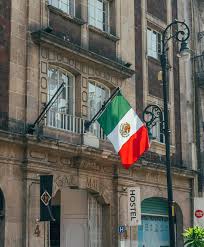By Priscilla Polizzi
This Virtual Exchange program between the United States and Mexico was a compelling opportunity to engage in international dialogue without even having to leave the chair in my classroom! Towards the end of the semester, my peers from Mexico and my classmates met in our respective small groups to discuss an intercultural collaborative Bishops’ documents on migration from Mexico to the U.S: Strangers No Longer: Together on the Journey of Hope.
After numerous months of conducting research within our groups, educating one another on specific aspects of migration, and putting together cohesive presentations on our topics through shared Google Docs, Canva slideshows, and WhatsApp conversations, this discourse about the Bishops document allowed us to finally discuss the moral, emotional, and religious implications of migration by sharing our opinions and posing questions to one another, separated from the didactic tone practiced by the research and statistics in our research.
This final discussion was conducted over the course of two Zoom sessions, the first of which divided the students into breakout rooms to talk face-to-face about the document. This was the first in-depth face-to-face conversation we have had, with the exception of our Zoom meeting to introduce ourselves in the beginning of the course. This immersive experience was a perfect closing point to our months of research, because at this point, we were educated on migration, and familiar with one another’s collaborative styles, as our research had given us a foundation to engage in personal conversation. Our conversation was multifaceted as it integrated our knowledge from research about migration, but also our experiences as Mexican citizens and U.S. citizens alike of international acceptance of others.
Being in a classroom setting with our Mexican peers created a more casual and comfortable environment to ask them questions about their perspective on my homeland. For example, the document Strangers No Longer: Together on the Journey of Hope (2003)[https://www.usccb.org/issues-and-action/human-life-and-dignity/immigration/stranger s-no-longer-together-on-the-journey-of-hope] features a section that discusses the U.S.’s welcoming of immigrants. It makes the positive claim, “From its founding to the present, the United States remains a nation of immigrants grounded in the firm belief that newcomers offer new energy, hope, and cultural diversity.” While the rest of the document goes on to extrapolate upon the ambiguous relationship between Mexican immigrants and the U.S. immigration services, I was cynical of this sugar-coated statement, and eager to ask my group members from Mexico if they agree that this quote is an accurate representation of the perspective of the U.S. towards immigrants. They expressed full advocacy of implementing reforms based on human dignity and rights of migrants, meaning that the U.S. is not perpetuating an appreciative environment.
The ability to ask my classmates such serious questions expanded my comprehension of migration and contributed to my ideas of practical implications that need to be put in place. My dialogue with my classmates through Zoom added a personal element to the issue. Instead of primarily pedagogical, my experience learning about migration was emotional, realistic, and, as mentioned, personal.
The second Zoom session was broader as it allowed for dialogue between the entirety of both classrooms. I was able to witness representatives from each group, as well as witness conversation guided by both professors. This enlightened me to the collaboration practiced amongst other groups as well, and it was truly inspiring to listen to the ideas that all groups came up with, and to know that my experience with my group was only a percentage of the engaging conversations and relationships that were formed throughout the duration of our semester-long program.
The ability to reap the power of modern technology by engaging with a classroom in a different area of the world was a highly transformative experience as it allowed representatives of two countries to discuss our everyday experiences with the interactions held by our governments. This is typically a dialogue that we have previously only been able to witness through history classes or on the news, and even so, those discussions are typically semi-scripted and held by government officials, who are usually older in age and presented in formal attire; those conversations are not comparable to the genuine dialogue that has taken place amongst college-aged classroom peers right in front of my eyes, on my own computer screen.

